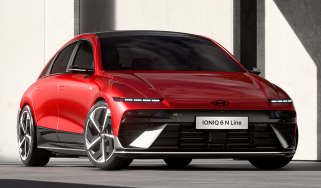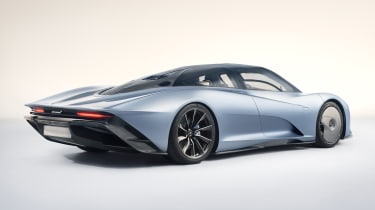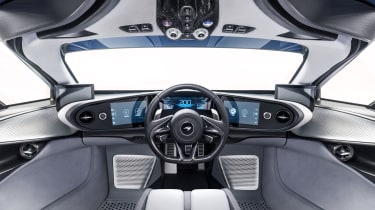McLaren Speedtail 2020: prices, spec and release date
New 2020 Mclaren Speedtail is the fastest-ever road car from the British firm, with over 1,000bhp and a 250mph top speed
This is the 2020 McLaren Speedtail, the British manufacturer’s fastest-ever road car, with over 1,000bhp and a £1.75 million price tag. If you want to buy one, it’s already too late – reservations have been taken for each of the 106 slated for production.
The Speedtail is something of a spiritual successor to the iconic McLaren F1, with a number of key design features linking the two cars over two decades apart – not least their unique central driving position. The Speedtail is also the first of 18 new cars (or derivatives) set to come from McLaren before 2025 as part of its ‘Track25’ business plan.
2020 McLaren Speedtail engine and performance
The McLaren Speedtail is powered by a ‘pioneering petrol-electric hybrid powertrain’ that produces 1,036bhp – it’s expected that this will consist of a four-litre V8 petrol engine accompanied by a sophisticated hybrid system. McLaren hasn’t gone into much detail about the engine itself, but it claims the Speedtail will sprint from standstill to 186mph in just 12.8 seconds and on to a top speed of 250mph. If these claims are to be believed, the Speedtail will be one of the fastest cars in the world when it arrives in 2020.
To reach its impressive top speed, the McLaren Speedtail features a driving mode named ‘Velocity’. Once selected, it optimises the hybrid powertrain for higher speeds by adjusting the car’s idle speed to charge the batteries, adjusting the active aerodynamics, lowering the car’s ride height by 35mm and retracting the rear-view cameras.
Design and interior
Measuring 5.2 metres long – longer than the new BMW X7 SUV – the McLaren Speedtail lives up to its name with a dramatic design that’s informed almost entirely by aerodynamics. The passenger compartment (McLaren calls it a ‘cockpit’) is teardrop-shaped, which together with the long carbon-fibre bodywork gives the Speedtail the lowest drag of any McLaren road car.
Other aerodynamic touches include static covers for the front wheels, retractable cameras in place of rear-view mirrors and active rear ailerons – small flaps to adjust airflow – that fold almost seamlessly into the Speedtail’s bodywork. The ducts below the LED headlights are as small as possible to minimise drag, while the upper intakes send air through the body and out from vents by the doors.
In contrast to the stripped-out, track-focused McLaren Senna, the Speedtail takes a more luxurious approach inside. The driver’s seat is positioned in the middle of the car, flanked either side by two passenger seats set further back – just as in the McLaren F1. The interior is trimmed with carbon fibre, aniline leather and other exclusive materials, all of which can be customised to the buyer's exact specifications through the McLaren Special Operations department.
McLaren has even teamed up with luxury watchmaker Richard Mille to create a new kind of carbon fibre called Thin-Ply Technology (TPT) Carbon Fibre, which lends a unique appearance to the car’s overhead-mounted control panel, gearshift paddles and steering-wheel clasp. The McLaren badge on the car’s nose is also finished in the material, with hand-polished white gold lettering.
Most Popular

Hyundai Ioniq 6 gets steely-eyed styling overhaul for mid-life update

Best car leasing deals 2025: this week’s top PCH offers
Tips & advice

Car dashboard warning lights: what does each symbol mean?

Electric car charging stations: public networks, charger types, apps and maps










